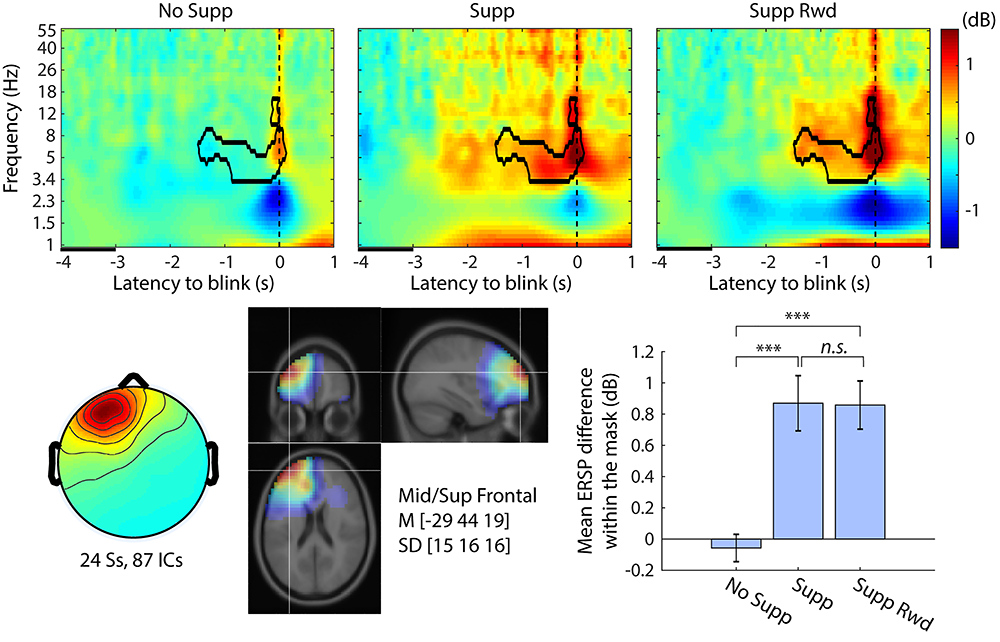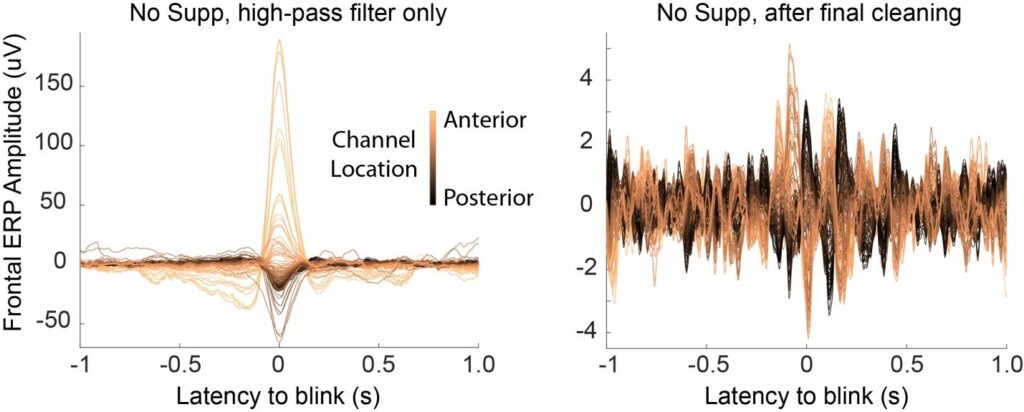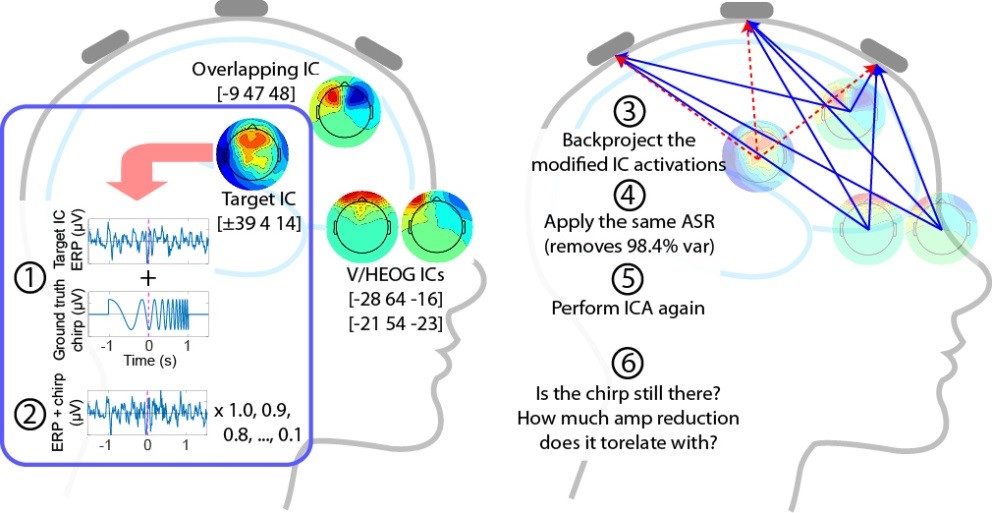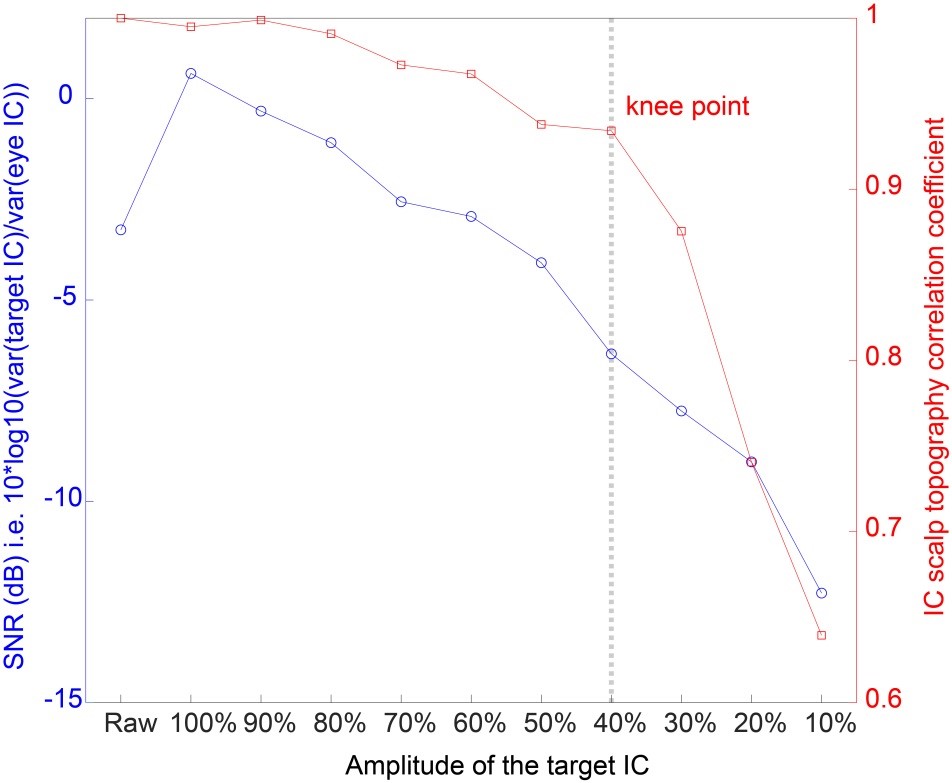This is a part of a study on chronic tic disorder conducted by Sandra Loo at UCLA. The idea is to investigate the effect of blink suppression in typically developed children. She included a unique idea of instructing the children to use ‘urgeometer’, which is just a customized joystick, to self-report the amount of urge in real time. Basically, I could find a pretty straightforward prefrontal involvement during voluntary blink suppression.

The link to the full paper (open access) is here.
https://academic.oup.com/cercorcomms/article/1/1/tgaa046/5881803
There was actually another intention in this paper, which is more related to EEG methodology. Think about the reason why this kind of study has not been done so far–it is because eye blink is a catastrophic artifact for a standard EEG analysis. I thought it is my responsibility to show minimum level of validation to justify my blink-related EEG analysis. This endeavor is, not surprisingly, reported in the Supplement.
For example, this is the before-after comparison. Apparently, the amplitude scale is 40 times different in this comparison! According to what I reported, average 98.4% of signal variance was removed from scalp-electrode signals. I thought this number is insane, so I wanted to check it.

How can I show that bathwater was thrown out, not the baby? The right way to do it would require a well-designed simulation study, which I could not afford. So I attempted to show the best circumstantial evidence that is available as a post-hoc validation using an ok-level-designed simulation.

I added a small ground-truth signal (1% of unprocessed signal standard deviation) in the scalp signal, then applied the data cleaning method, artifact subspace reconstruction (ASR) + independent component analysis (ICA) to see if the ground-truth signal survives. This process was repeated for the different levels of SNR which was progressively lowered. The result was like this.

I found that the IC-scalp topography became suddenly worse when SNR is lowered to less than 30%. So I concluded that the small signal (1% of unprocessed signal standard deviation) can easily survive the current ASR + ICA methold. Moreover, it has further SNR margin of 7dB.
This ok-level-design was whipped up for a quick proof of concept, but it seems to deserve further development into a full method paper. However, I have so many of this kind of ideas that I can’t publish all of them. If there are grad students or post-docs interested in this idea, I would be happy to collaborate.
